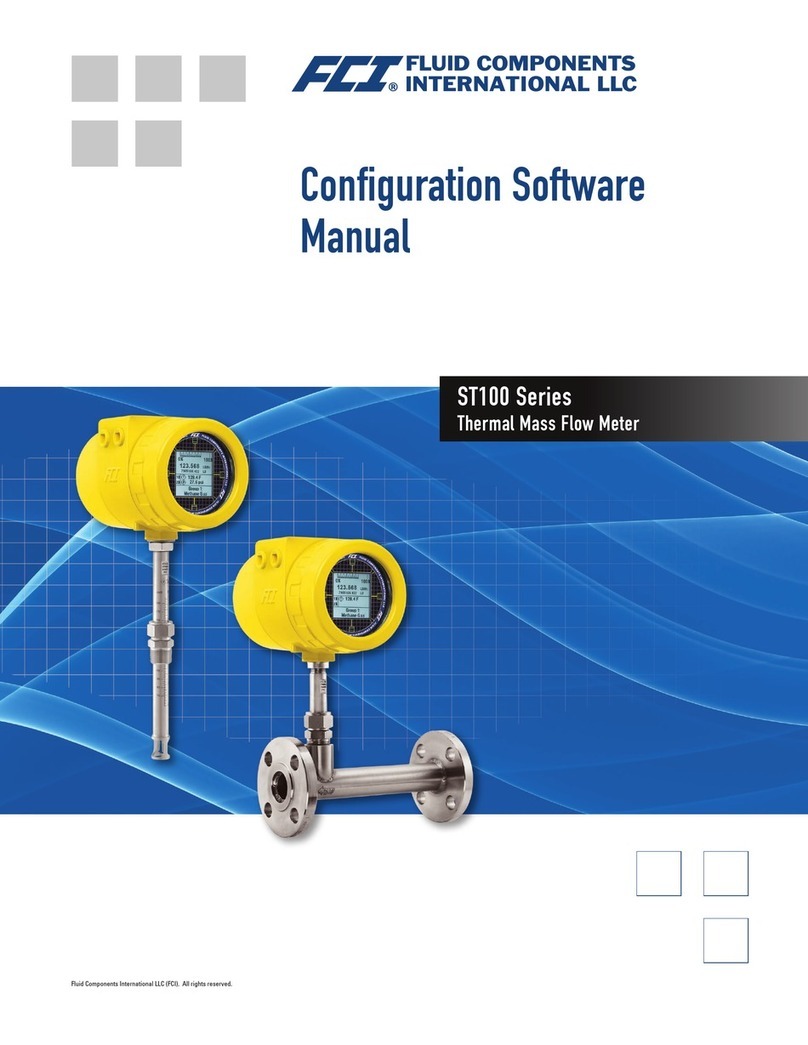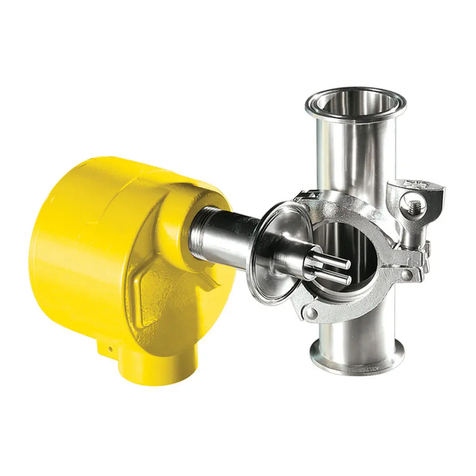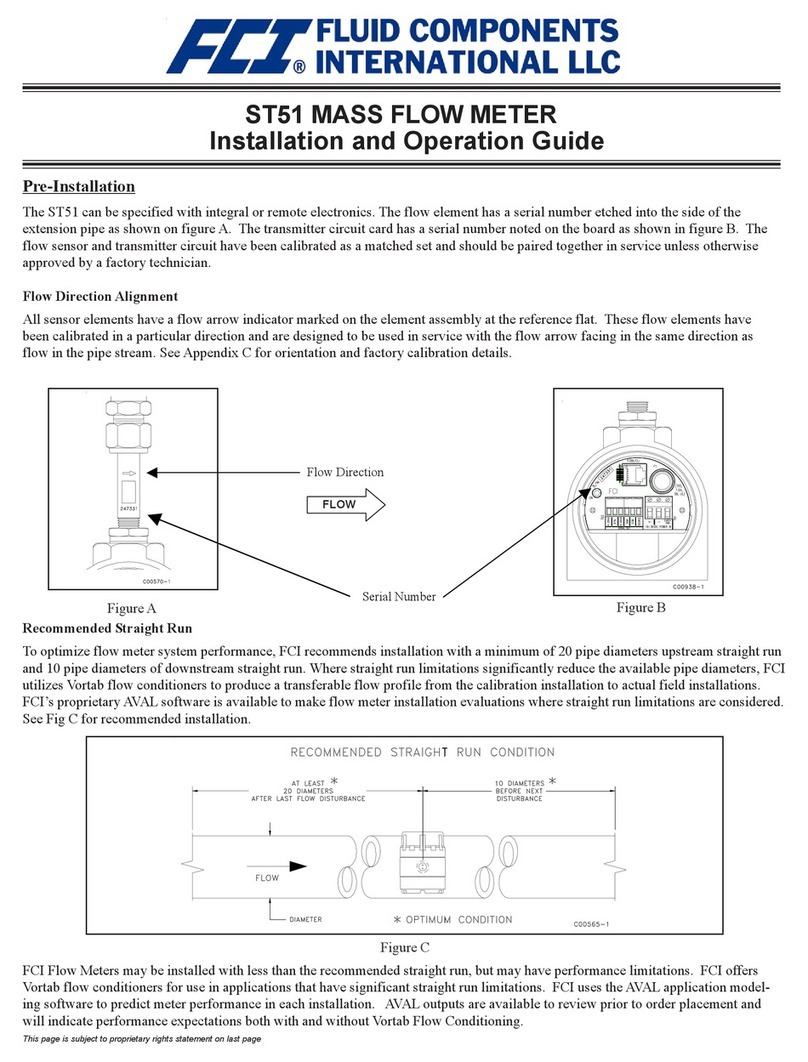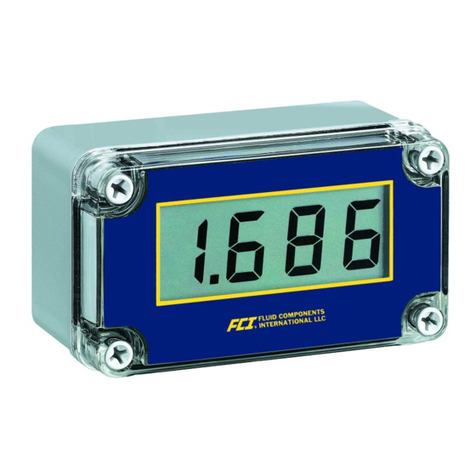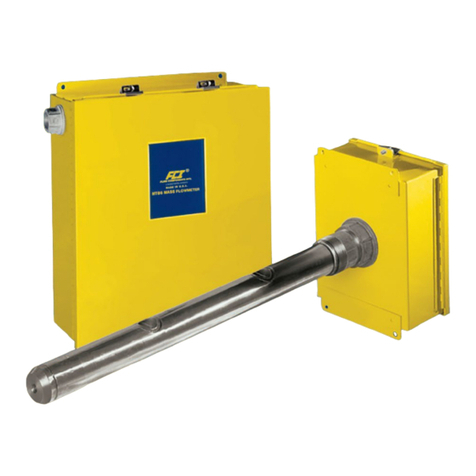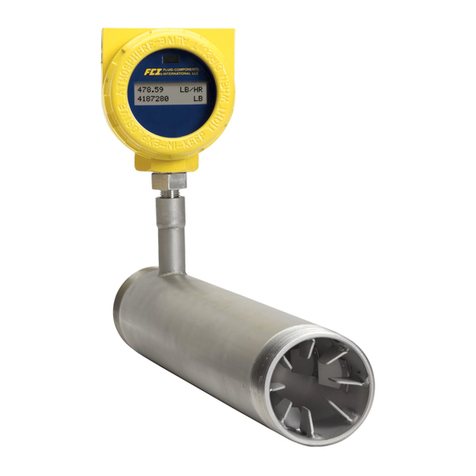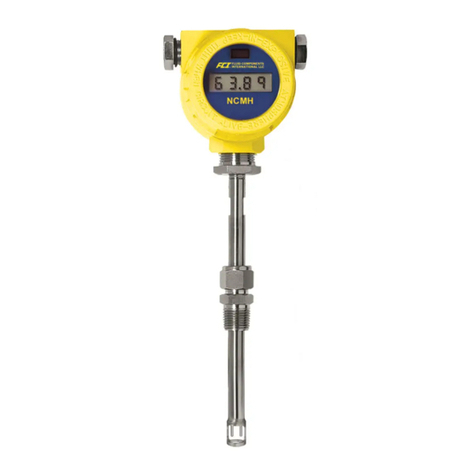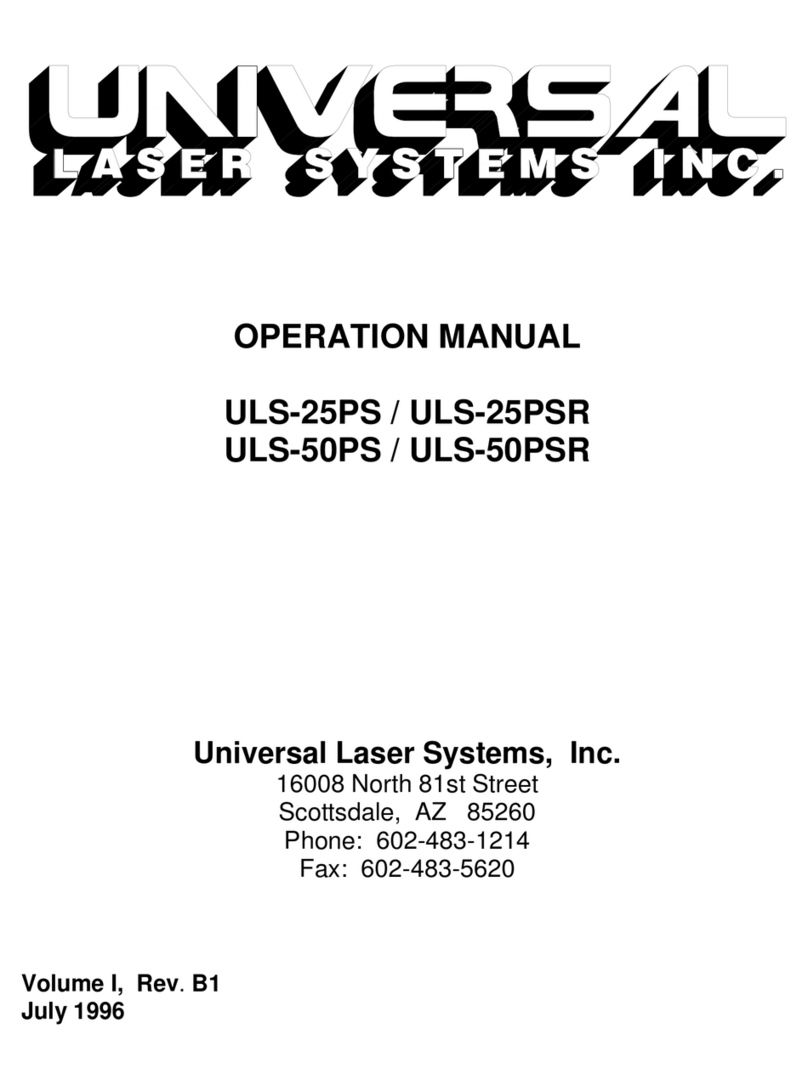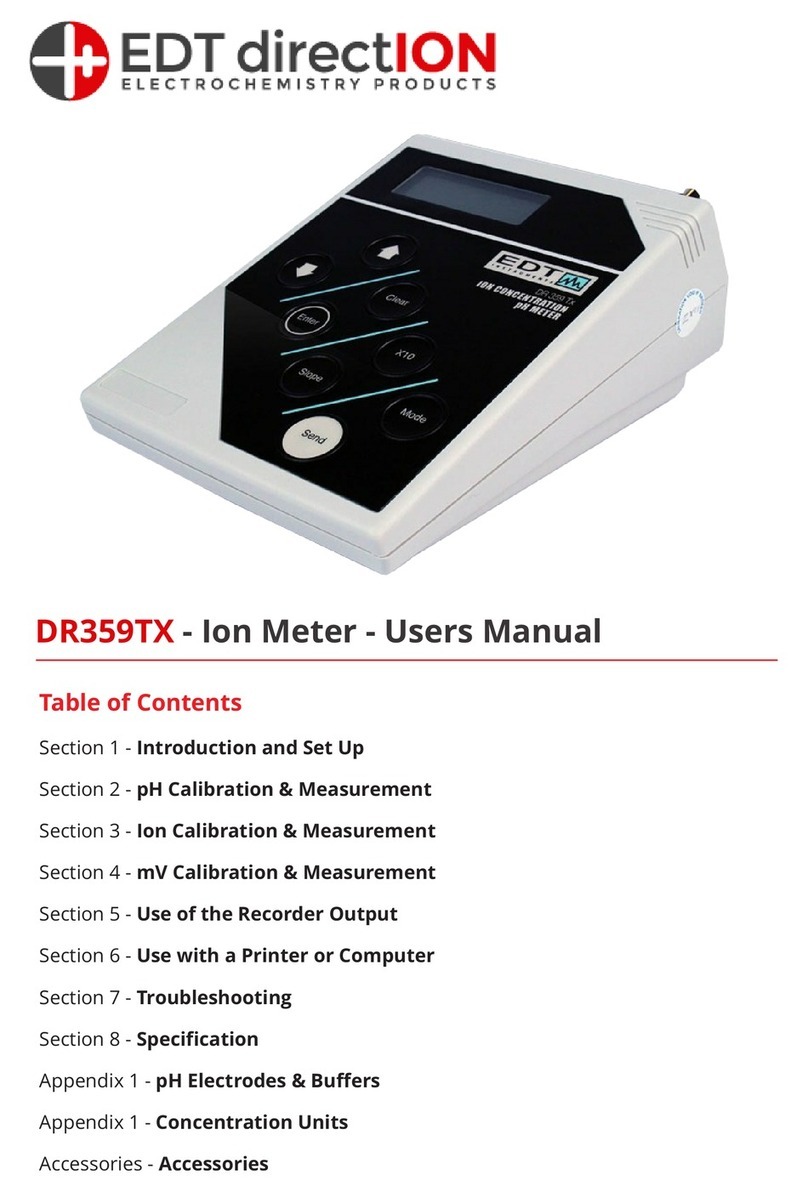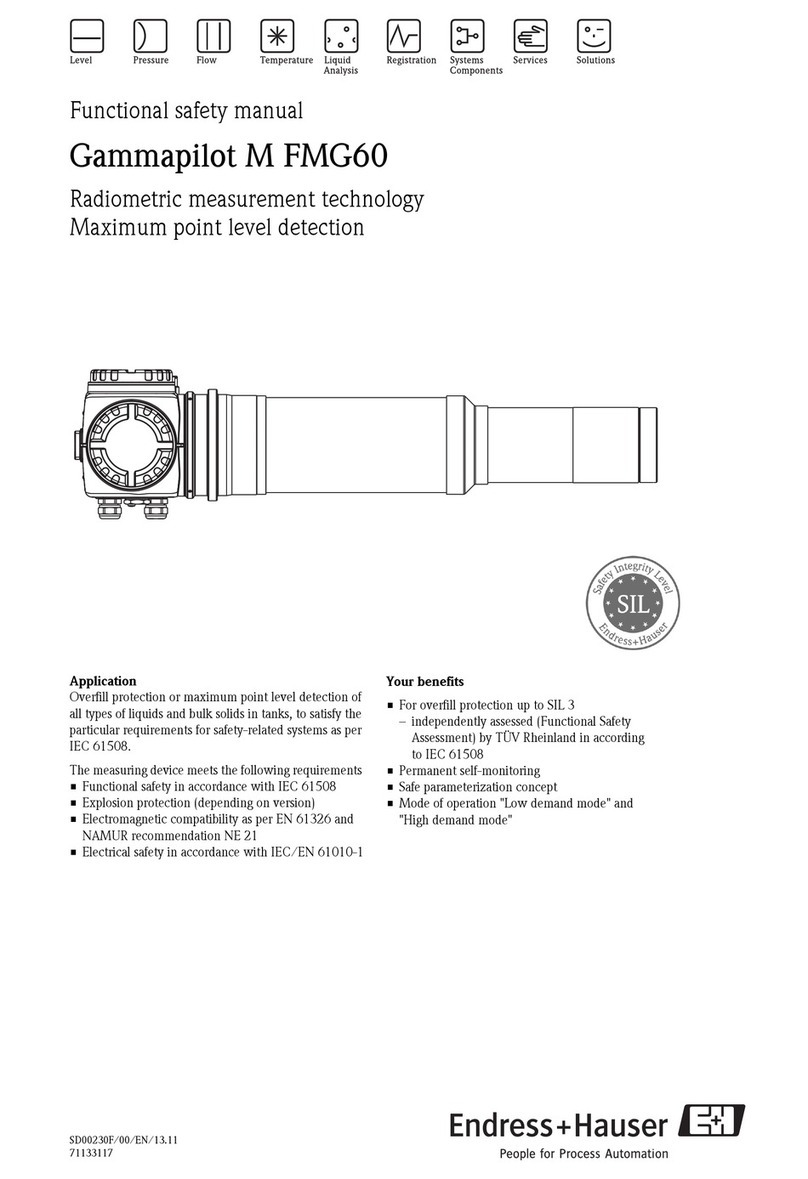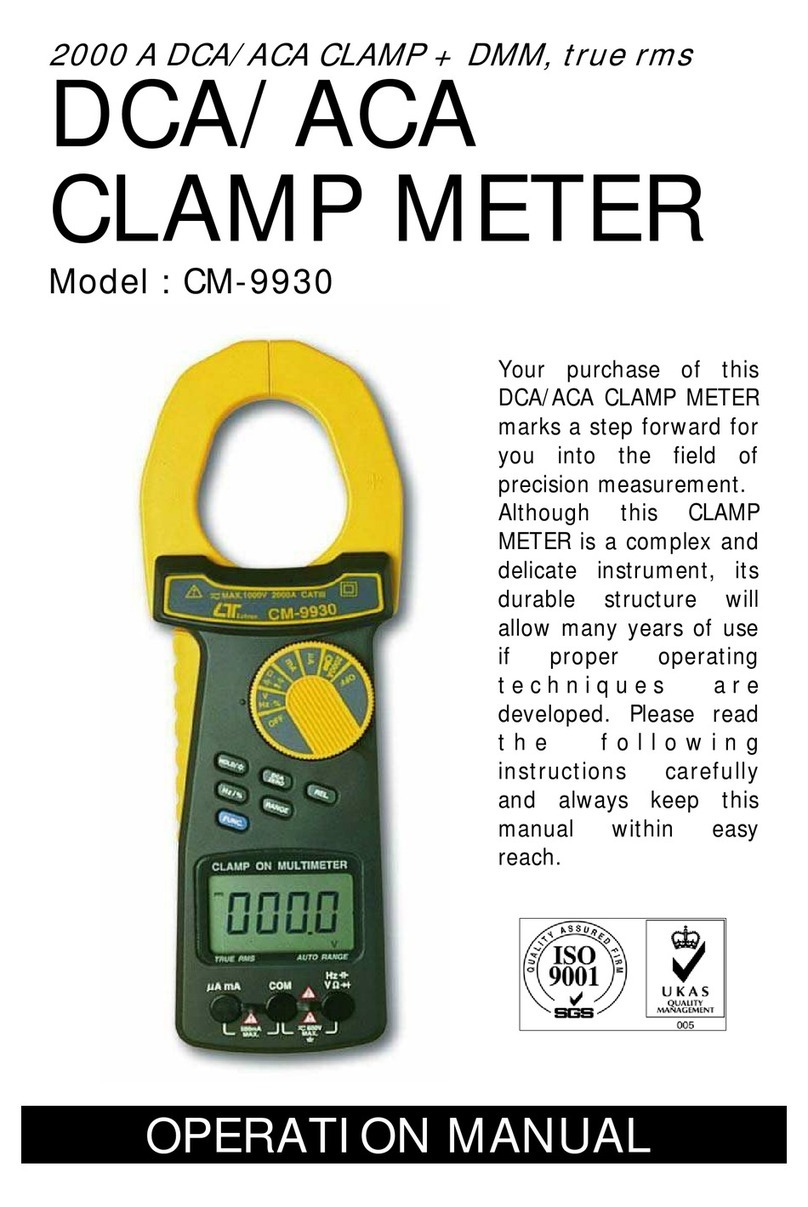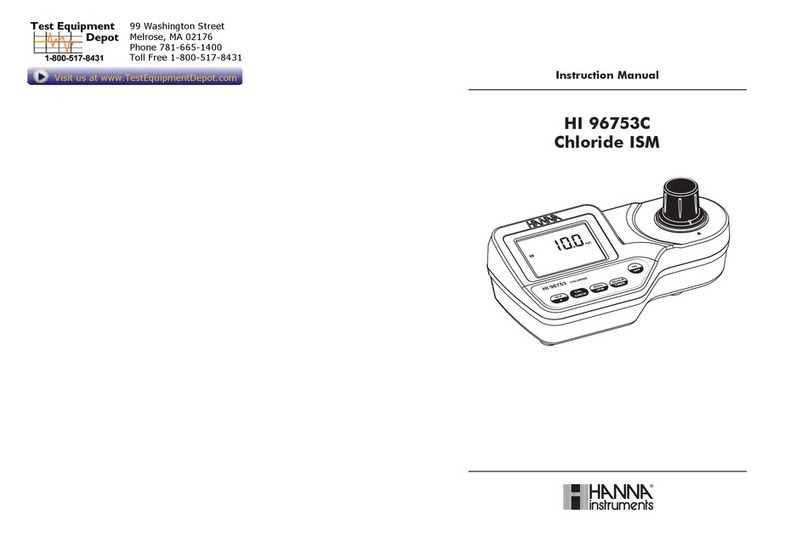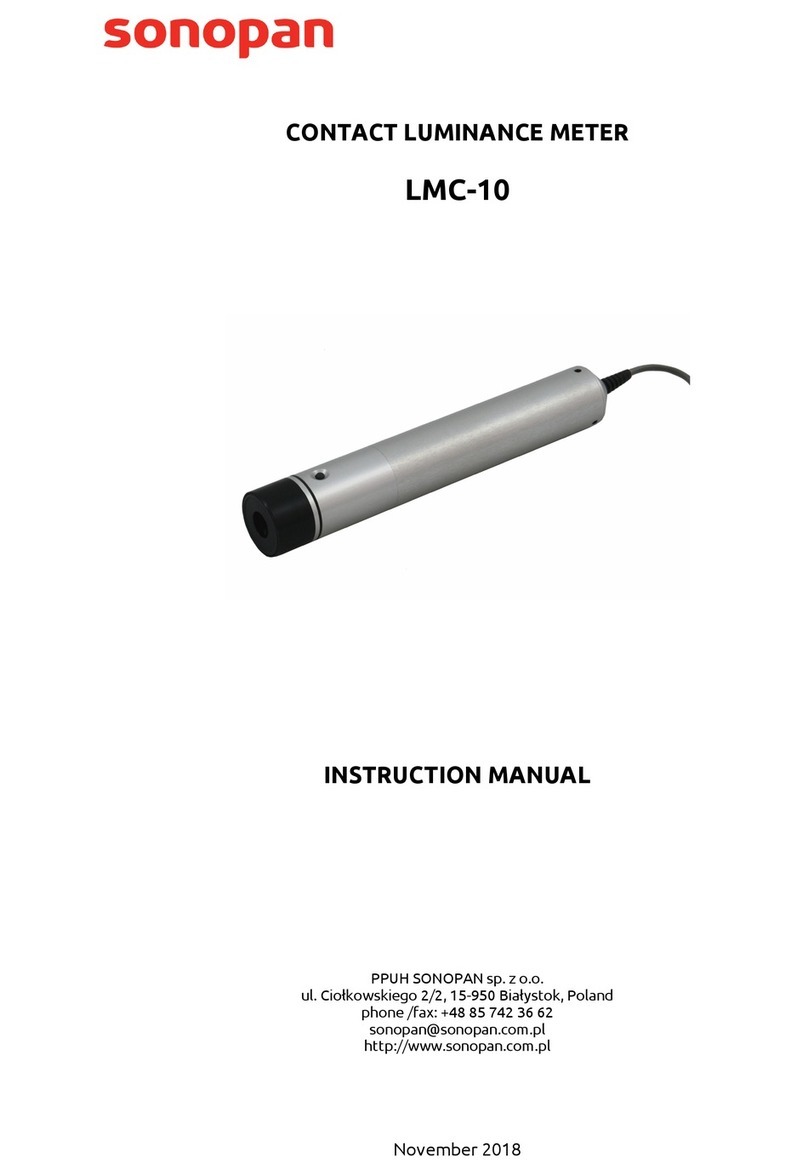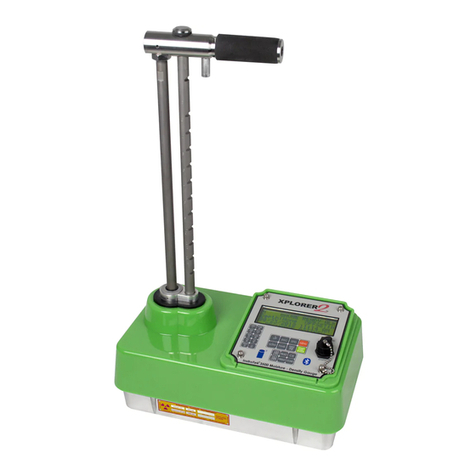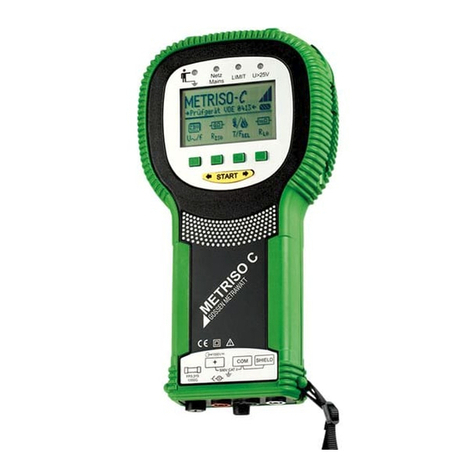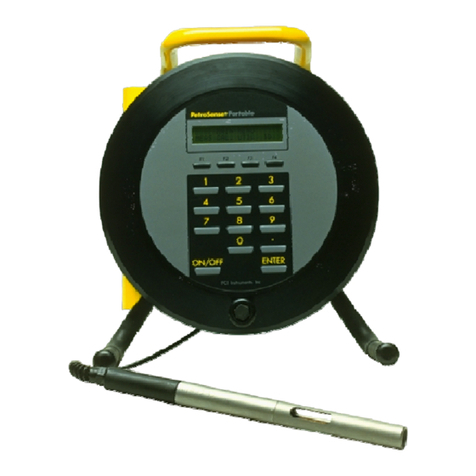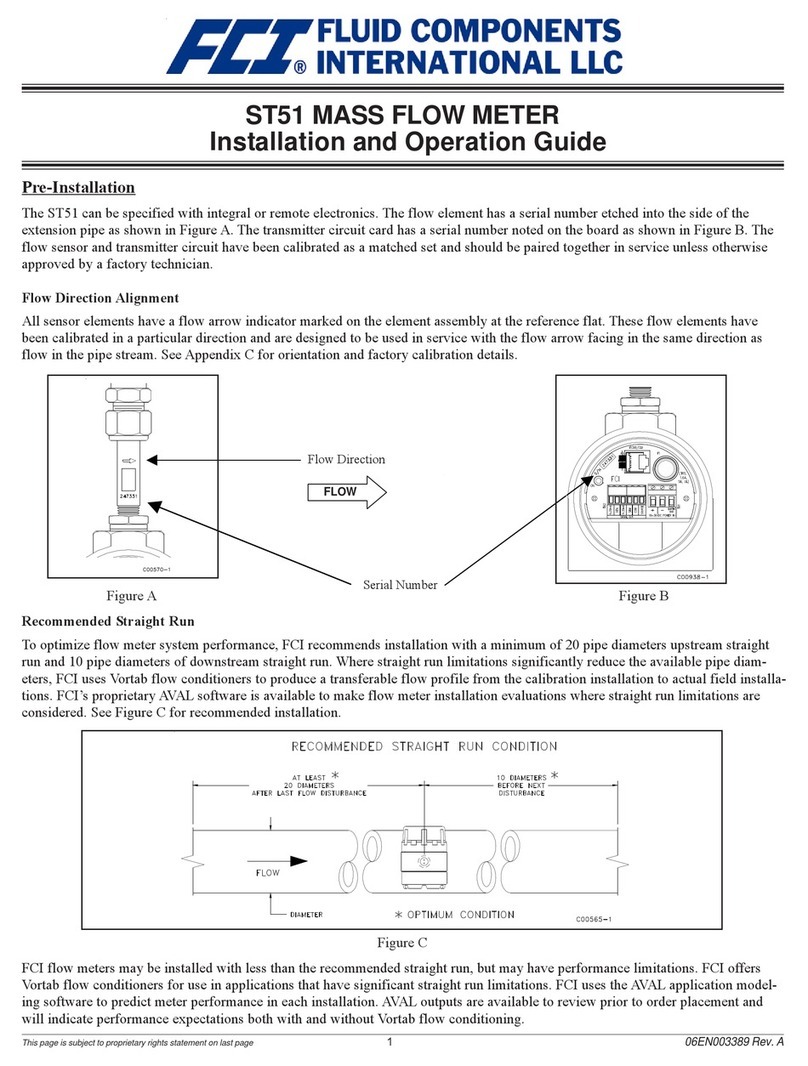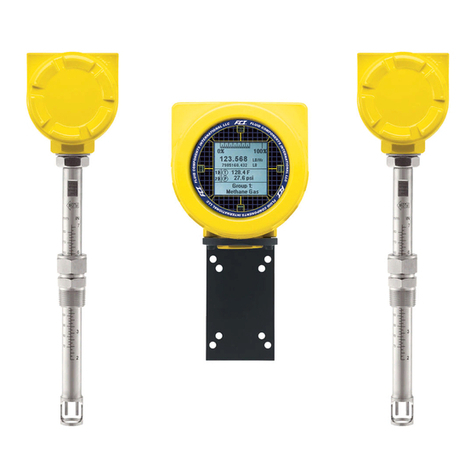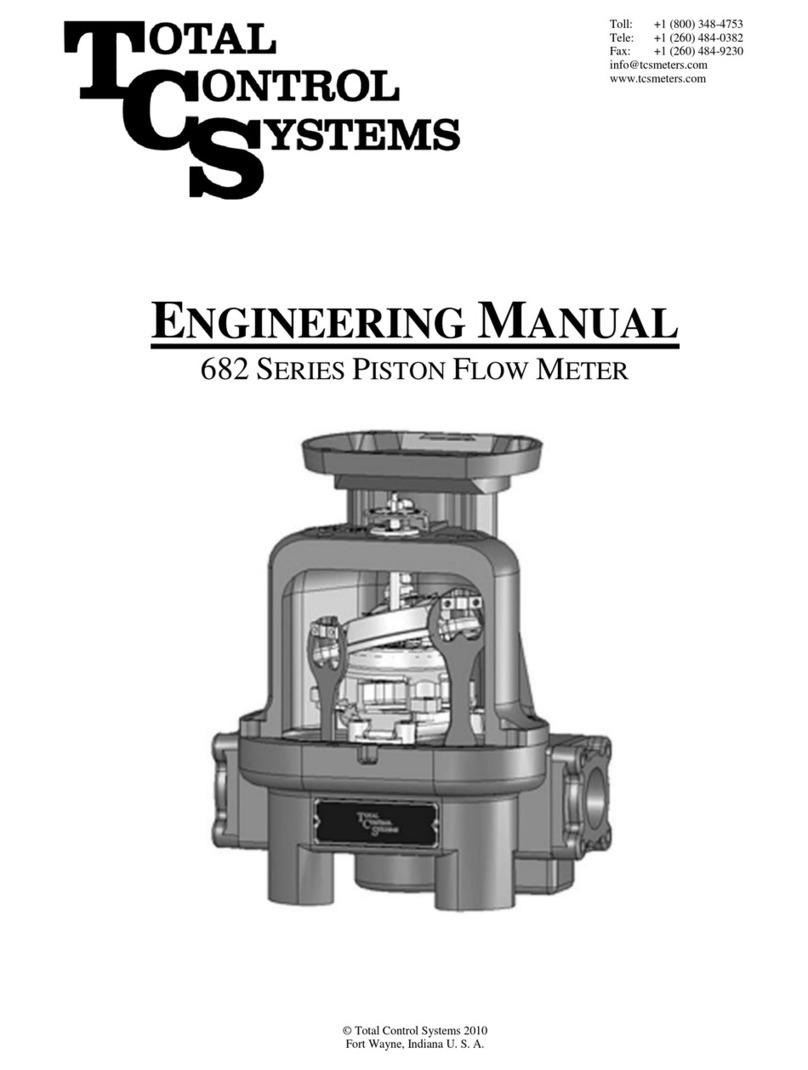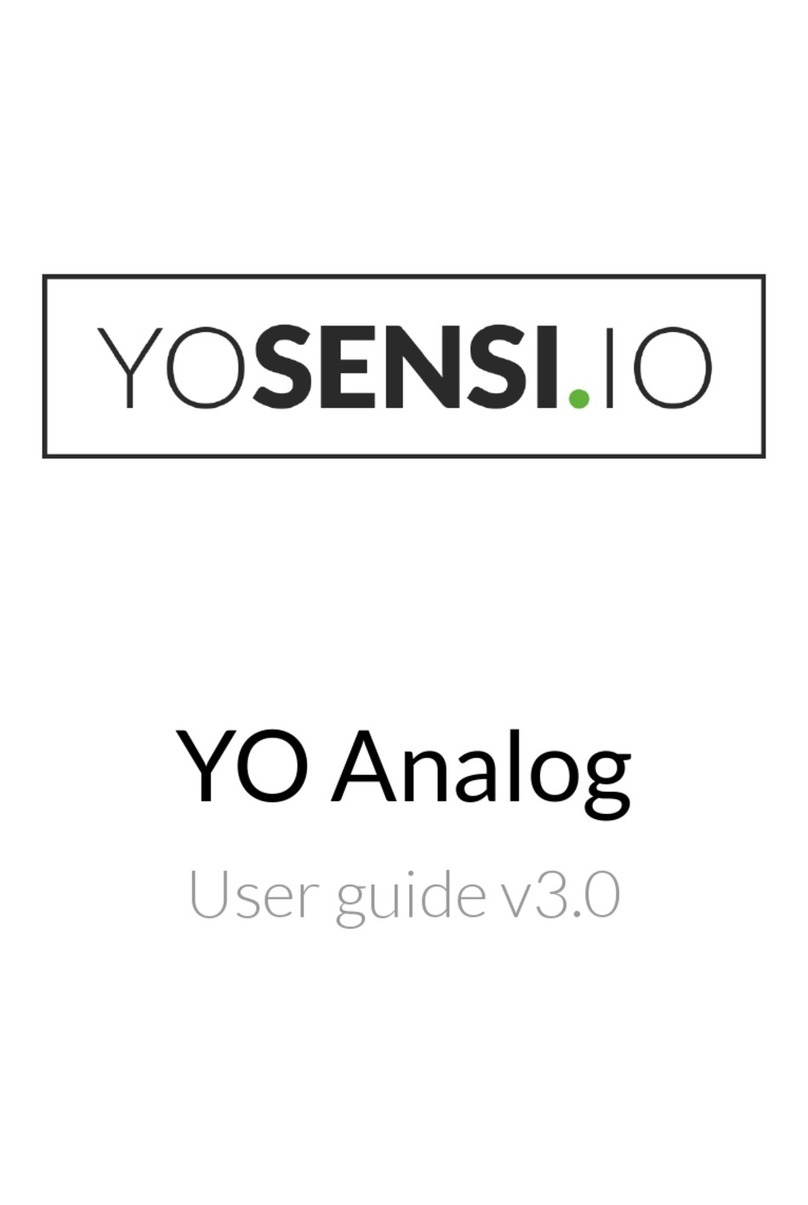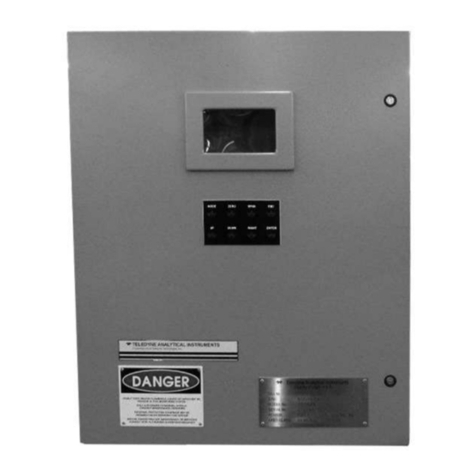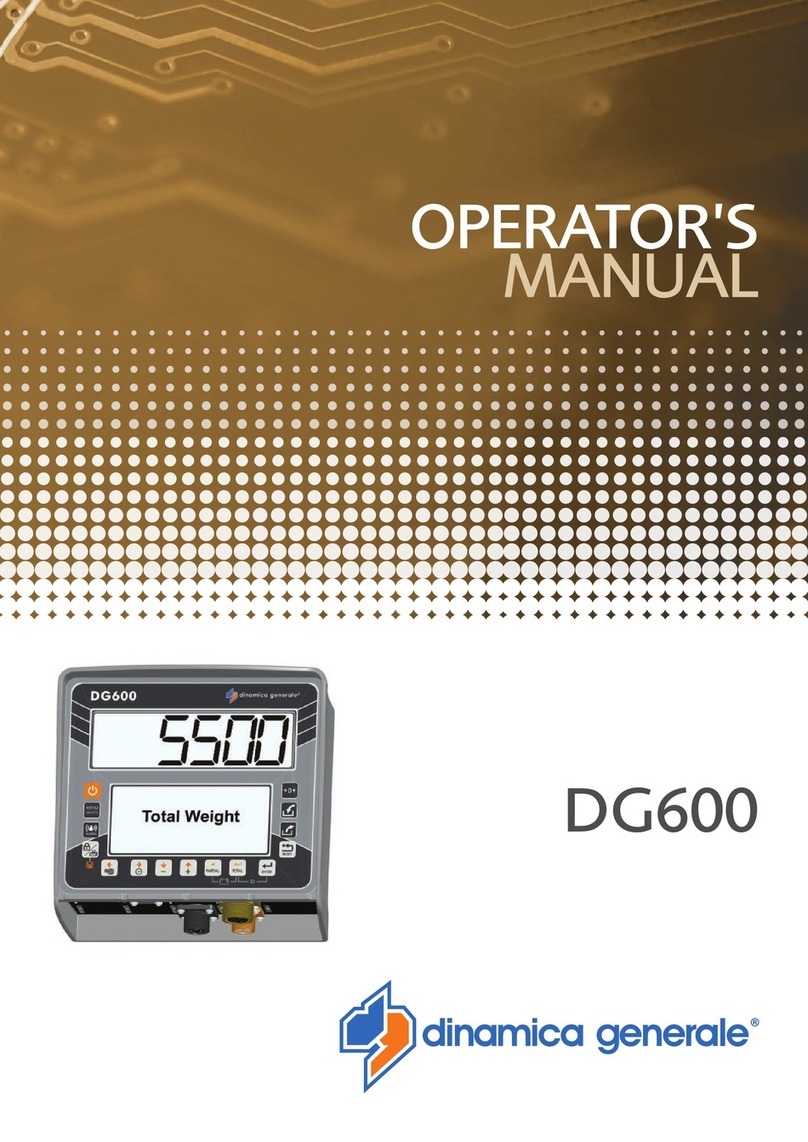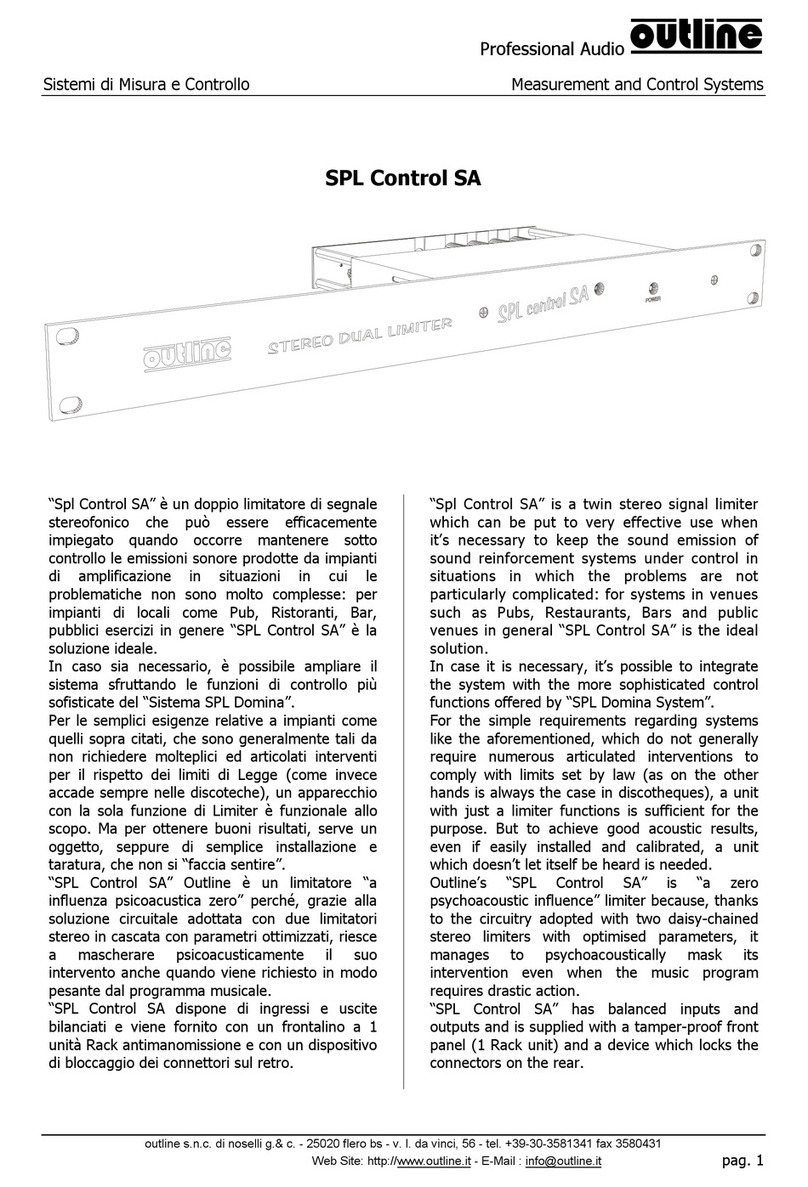
GENERAL ST80/ST80L Flow Meter
4 Fluid Components International LLC
■Operating Temperature (Process)
ST80 Insertion Style (FPC, FP, and Ssensor head types)
CompressionFitting Integral/Remote
LowPressurePackingGland Integral/Remote
Med. Pressure PackingGland Integral/Remote
FixedNPT Integral/Remote
FixedFlange(1"orDN25) Integral/Remote
Fixed Flange (≥1½" or ≥DN40) Integral/Remote
Notes: 1. Minimum temperature is -40 °F [-40 °C].
2. For Teflon ferrule max. temperature is 200 °F (93 °C).
ST80L In-line Style ( Fand Ssensor head types)
-40 °F to 257 °F [-40 °C to 125 °C]
■Model ST80, Process Connections and Insertion Lengths
Compression Fittings: Model ST80 only
¾" or 1" male NPT, stainless steel with adjustable Teflon
ferrule or metal ferrule; or flanged tapped and threaded for ¾"
fitting, ANSI or DIN flanges.
Compression fittings not available with 850 °F [454 °C]
temperature versions of ST80.
Retractable Packing Glands
Low pressure 50 psig [3,5 bar (g)] or medium pressure 500
psig [34 bar (g)] with graphite or Teflon packing material; 1¼"
male NPT or ANSI or DIN flange.
Teflon packing required when process media is ozone, chlorine
or bromine. Remote mount required when medium pressure
packing gland is required.
Fixed Fittings/All Welded
1" male NPT, ANSI or DIN flange
Insertion Length
Field adjustable lengths:
1" to 6"[25 mm to 152 mm]
1" to 12"[25 mm to 305 mm]
1" to 21"[25 mm to 533 mm]
1" to 36"[25 mm to 914 mm]
1" to 60"[25 mm to 1524 mm]
Fixed lengths from 2.6" to 60" [66 mm to 1524 mm]
■Model ST80L, In-line Flow Body and Process Connections
Flow element is calibrated and supplied as a spool-piece; options
include low flow injection tubes and built-in Vortab flow
conditioners for optimum low flow rangeability and performance
Size: 1" diameter tubing; 1", 1½", or 2" Schedule 40 pipe;
1" Schedule 80 pipe
Length: 9 nominal diameters
Process Connections: female NPT, male NPT, ANSI or DIN
flanges, or butt weld prepared
Option: Flanges sized for flow tube
■Remote Transmitter Configurations
Transmitter may be mounted remotely from flow element using
interconnecting cable (up to 1000 ft [300 m]). Remote configura-
tion required with selection of medium pressure packing gland.
Flow Transmitter/Electronics
■Operating Temperature
-40 °F to 140 °F [-40 ° C to 60 °C]
■Input Power
AC: 100 VAC to 240 VAC, 50 Hz to 60 Hz
DC: 24 VDC (19.2 – 28.8 volts)
■Power Consumption
■Battery Backup (for RTC)
Industrial-spec 3V Lithium coin cell type CR2450N
■Outputs
Analog
Standard: Two (2) 4-20 mA outputs*.
4-20 mA outputs are user assignable to flow rate and tempera-
ture; outputs are user programmable to full flow range or subsets
of full flow range.
* Outputs are isolated and have fault indication per NAMUR
NE43 guidelines, user selectable for high (>21.0 mA) or low
(<3.6 mA)
HART (comes standard with analog outputs), V7 compliant.
Digital
Standard: USB (service and configuration port only); Modbus
RS-485
Optional: FOUNDATION Fieldbus H1, PROFIBUS PA, or
PROFIBUS DP.
FF Physical Parameters
Maximum Network Input Voltage - Ui (in V) = 32
Maximum Network Input Current - li (in mA) = 13
■Enclosures
Main Transmitter/Electronics:
NEMA 4X, IP66/67 polyester powder coated aluminum or
optional 316L stainless steel.
Four (4) cable ports ½"-14 NPT or M20 x 1.5
Size: 5" W x 5.40"Hx7.75"L(127mmx137 mmx197mm)
Local Enclosure (Remote Configuration):
•Single cable port enclosure (available with packing gland/low and
med press; ≥1.5" fixed flange; fixed NPT process connections):
NEMA 4X, IP66/67 polyester powder coated aluminum or
optional 316L stainless steel.
One (1) cable port 1"-11.5 NPT
Size:4.68" W x 4.87" H x 5.4" L (119 mm x 124mm x 137 mm)
•Dual cable port enclosure (available with compression fitting;
1" fixed flange process connections):




















